| DEPARTURE/RETURN LOCATION | Arrive New Delhi– Overnight in delhi | ||||
| DEPARTURE TIME | Please arrive at least 2 hours before the flight. | ||||
| INCLUDED |
|
||||
| NOT INCLUDED |
|
DAY 1: DELHI TO GUWAHATI
Night stay at a wildlife lodge at Kaziranga.
DAY 2 TO 4: KAZIRANGA NATIONAL PARK
Night stay at a wildlife lodge at Kaziranga.
DAY 5: KAZIRANGA TO NAMERI
Night stayat a wildlife tented camp.
DAY 6: NAMERI NATIONAL PARK
Night stay at a wildlife tented camp.
DAY 7: NAMERI TO EAGLENEST WILDLIFE SANCTUARY VIA BHALUKPONG
Night stay at Lama Camp.
DAY 8 TO 11: EAGLENEST (600-2900 M)
The camp sites in Lama Camp (2350 m), Bompu (1940 m) and Sessni (1250) offer basic but comfortable tented accommodation. We will use at least two camp sites during our stay. During our stay we can encounter birds like Rufous-bellied and Mountain Hawk-Eagle, Rufous-throated and Chestnut-breasted Partridge, Blyth’s and Temminck’s Tragopans, Tawny Wood-Owl, Specked and Ashy Wood Pigeons, Rufous-necked Hornbill, Ward’s Trogon, Chestnut-winged and Indian Cuckoos, Bay and Pale-headed Woodpeckers, Grey-chinned Minivet, Blue-fronted Robin, Golden Bush-Robin, Spotted, Grey-sided, Scaly and Black-faced Laughingthrushes, Red-faced Liocichla, Coral-billed and Slender-billed Scimitar-Babblers, Wedge-billed, Eye-browed, Bar-winged, Long-billed and Spotted Wren Babblers, Golden Babbler, Black-headed Shrike-Babbler, Cutia, Black-eared and Green Shrike-Babblers, Red-tailed and Blue-winged Minlas, Golden-breasted, Brown-throated, Streak-throated and Yellow-throated Fulvettas, Beautiful and Rufous-backed Sibias, Rufous-vented and White-naped Yuhinas, Fire-tailed Myzornis, Red-billed Leiothrix, Greater Rufous-headed Parrotbill, Hoary-throated, Streaked-throated and Rusty fronted Barwings, Chestnut-headed, Slaty-bellied and Yellow-bellied Tesias, Yelow-bellied Bush-Warbler, Broad-billed and Chestnut-crowned Warblers, Vivid and Large Niltavas, Ultramarine, Sapphire, Slaty-blue, Dark-sided and White-gorgeted Flycatchers, Mrs Gould’s and Fire-tailed Sunbirds, Yellow-browed, Rufous-vented , Fire-capped, Rufous-fronted and Sultan Tits, White-tailed and Beautiful Nuthatches, Rusty-flanked and Brown-throated Treecreepers, Yellow-bellied and Fire-breasted Flowerpeckers, Collared and White-winged Grosbeaks, Scarlet and Gold-naped Finches, Grey-headed and Brown Bullfinches and Yellow-billed Blue-Magpie.
Night stay in tented accommodations.
DAY 12-13: EAGLENEST AND DRIVE TO MANAS
Night stay at a wildlife tented camp.
DAY 14: DRIVE TO GUWAHATI
ACCOMMODATION
We will use comfortable wildlife lodge at Kaziranga, permanent and comfortable wildlife tented accommodation at Nameri and tented accommodations at two campsites at Eaglenest.
TRANSPORT
Domestic flights from Delhi to Guwahati and back to Delhi. In Assam and Arunachal Pradesh we will use cars or jeeps and on the game-drives in Kaziranga we will be in 4 x 4 jeeps. At Nameri we will use boat to cross the river. At Panbari, Nameri and Eaglenest we will be walking. To avoid any discomfort, at Eaglenest where all our birding is on foot, vehicles will be kept handy.
CLIMATE
Kaziranga and Nameri are expected to be warm and moderately humid in the middle of the day. During jeep rides in morning and evening it is expected to be cool. Eaglenest would be cooler depending on the altitude of the camp. Rain protection is recommended at all locations.
PHOTOGRAPHY
Kaziranga offers excellent opportunities of photographing big mammals. Nameri and Eaglenest are great places for bird photography, though the light conditions can vary depending upon weather.
Day 15 Arrive New Delhi
Overnight in delhi
Day 16 After Breakfast
Drive to Corbett National Park (7 hours). Lunch in Corbett. Evening birdging around the river. overnight in Hotel.
Day 17-18 . Ramnager-Dhikala
After breakfast Birding Out side of the park and than drive to Dhikala Forest Lodge (Corbett National Park) By open Jeep with packed lunch from hotel . Birding on the way looking for ‘ Tawny and Brown fish owl,
and afternoon visit to the grasslands & forested area for birding and for Tiger. Birding in the lower jungle track along the Ramganga river is very rewarding for water birds such as river lapwings, waders, mergansers and other waterfowl. While relaxing at the lodge or visiting the grasslands one can see long-tailed nightjar, jungle owlet, spot-bellied owl, common stonechat, black francolin, purple and crimson sunbird, golden-fronted & orange-bellied leafbird, black-shouldered kite, hen harrier, changeable hawk-eagle, chestnut-tailed starling etc. . Overnight stay at Dhikala Forest Lodge in side the park.
Day19 .Dhikala-Ramnagar.
Morning open jeep safari through the grasslands and dens forests looking for Tiger. This is the best mode of transport for wildlife viewing. Return for breakfast and then spend time till lunch on a watchtower overlooking a water hole. Drive to hotel out side of the park . Some of the best birding areas of Dhikala are Sambhar Road and Khinanauli. One can expect to see great slaty woodpecker, great hornbill, puff-throated babbler, white-rumped shama, Pallas’s fish eagle etc. Hotel for dinner & overnight stay Ramnagar.
Day 20 Corbett- Delhi and okhala
OKHLA BIRD SANCTUARY
We spend our first morning birding at Okhla Bird Sanctuary situated on the river Yamuna. Specialities of the place are two endemic species, Striated Babbler and White-tailed Stonechat and are rather easy to find here. Other species of interest are Striated Grassbird, Moustached Warbler, four species of prinias including, Yellow-bellied, Graceful, Plain and Ashy Prinias, Oriental Skylark, Small Minivet and Red Avadavat. A rarity for the Indian subcontinent, White-crowned Penduline Tit has been recorded from this site.The visit to Okhla is an opportunity to quickly observe species which are going to form core of your birding experience at Bharatpur and Bund Baratha for the next four days. These include various waterfowl, shorebirds, gulls, terns and raptors.
DAY 21-22: delhi-KEOLADEO NATIONAL PARK, BHARATPUR
Keoladeo National Park is better known to the world as Bharatpur, named after the next-door town. Once the shooting reserve of the Maharaja, the area is fed by water from the nearby river and the artificially created wetland is arguably the best birding site in Asia. It has an area of approximately 28 square km. and apart from the wetlands there are patches of grassland, woodland and acacia scrub. Mode of transport inside the park is cycle rickshaw but frequently one has to walk on to the trails where the rickshaws can not go.
We will make trips to different parts of the park on each successive day and our four-night stay is likely to produce a bird tally of 150-200 bird species.
Bharatpur is a major nesting area for thousands of Egrets, Painted Storks, Open-billed Storks, Cormorants, Darters, Ibises and Spoonbills in the rainy season. By the time it is winter it is possible to see immature of all these species. Many species of Ducks and Geese can be seen at Bharatpur including Bar-headed Goose, Ruddy Shelduck, Comb Duck, Cotton Pygmy-Goose, Spot-billed Duck, Red crested and Ferruginous Pochards. Bharatpur attracts lots of raptors in winters including Egyptian, White-rumped, Indian and Red-headed Vultures. Eurasian Marsh Harrier, Shikra, Indian Spotted, Geater Spotted, Tawny, Steppe, Imperial, Bonelli’s and Booted Eagles, Common Kestrel and Peregrine Falcon.
The waders we can come across include Black-tailed Godwit, Eurasian Curlew, Spotted Redshank, Wood Sandpiper, Little and Temminck’s Stints, Ruff, Little Ringed and Kentish Plovers, White-tailed Lapwing and if we are lucky the elusive Sociable Lapwing. The world’s tallest flying bird Sarus Crane can be seen in the reserve. Indian Coursers have been recorded from the reserve regularly during last few years.
A day visit to Bund Baratha, a man made lake can be very productive and one can expect River Terns, Indian Skimmers, Great Thick-knee, Brown Crake and Sulphur-bellied Warbler.
Some of the other birds to be seen at Bharatpur are Brown-capped Pygmy Woodpecker, Pied Kingfisher, Little Swift, Indian Scops and Dusky Eagle Owls, Grey and Indian Nightjars, Yellow-footed Green Pigeon, Purple Swamphen, Common Coot, Pheasant-tailed and Bronze-winged Jacanas, Whiskered Tern, Black-crowned Night Heron, Black Bittern, Great White Pelican, Bay-backed Shrike, White-bellied Drongo, Orange-headed and Tickell’s Thrushes, Tickell’s Blue Flycatcher, Siberian Rubythroat, Desert Wheatear, Chestnut-bellied Nuthatch, Streak-throated Swallow, Blyth’s and Clamorous Reed Warblers, Yellow-eyed Babbler, Lesser Whitethroat, Rufous-tailed and Crested Larks, Thick-billed Flowerpecker, Citrine Wagtail, Paddyfield and Tawny Pipits, Red Avadavat, Black-headed and Red-headed Buntings.
Apart from the birds one can see at Bharatpur other forms of life in the park as well. Northern Palm Squirrels convey their presence by making bird-like calls, as they run around from one branch of the tree to another. Blue Bull, locally known as Neel Gai, is the largest Indian antelope. It prefers the small islands with Acacia trees in the wetland. Sambar, the largest Indian deer shares the same habitat with the Blue Bull. Herds of Spotted Deer prefer the dry woodland areas. Golden Jackal, Wild Boar, Grey and Small Indian Mongoose are the other mammals. Bharatpur is one of the easiest places to see the Indian Rock Python. There are areas where these 4-5 meter long reptiles can bee seen basking in the sun.
Night stay at a comfortable lodge at Bharatpur.

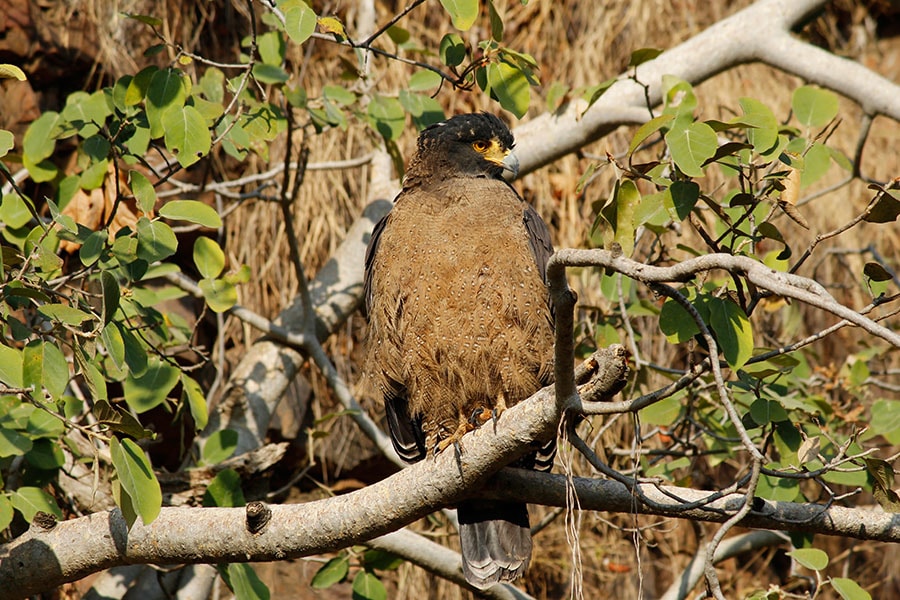
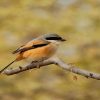
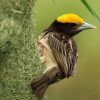
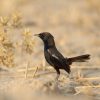
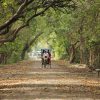
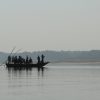
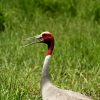
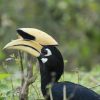
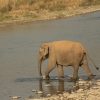
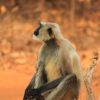
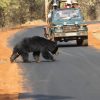
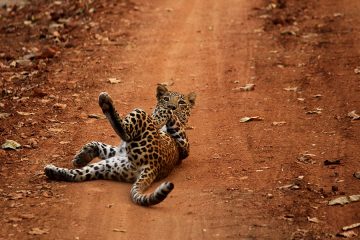
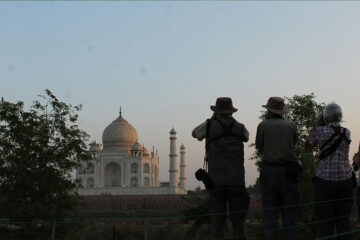
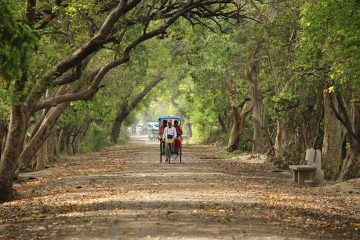
Tour Reviews
There are no reviews yet.
Leave a Review